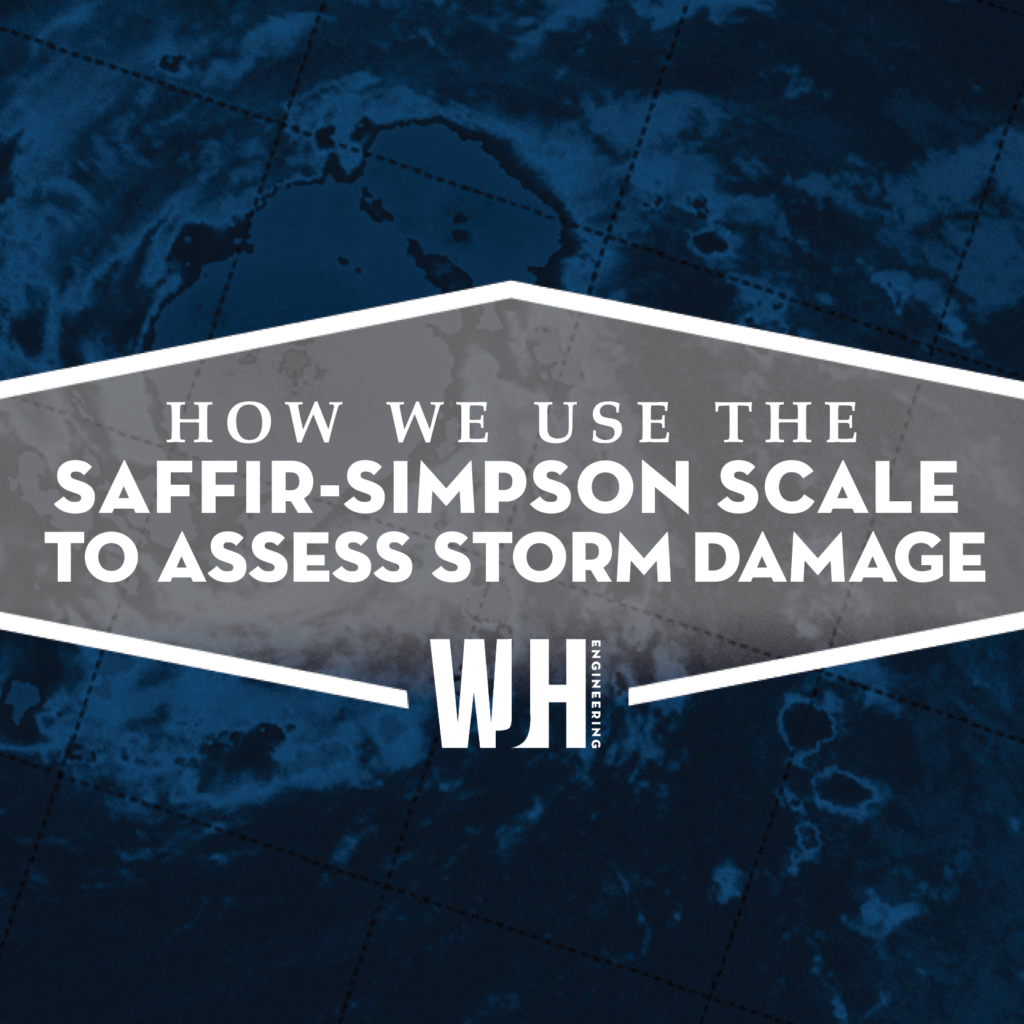When a tropical storm or hurricane comes rolling through our area, we are often asked to determine if property damages were caused by the winds of that storm. Recently we had Tropical Storm Isaias come to town, so we were prepared for the work that would come in along with the storm. We use a variety of tools, including observation of surrounding areas, reviewing historical weather reports and reviewing aerial and street view photography. However, the most useful and powerful tool in our tool belt is the Saffir-Simpson Scale.
This crucial storm assessment tool was developed in 1971 by Civil Engineer Herber Saffir & Meteorologist Robert Simpson (explaining the name). The duo teamed up to create a tool that helps engineers and meteorologists predict damages that will come along with strong storms. This scale divides hurricanes into the numerical categories that we are all familiar with (Category 1, etc.) based upon the sustained wind speeds within the storm. It then goes on to correlate these wind speeds with expected damage – this is what is helpful for us, being Forensic Engineers.
To give some context, a Category 1 storm containing 74 – 95 mph winds, “usually causes no significant damage to most well-constructed permanent structures”. Therefore, if we receive an assignment and the claim is for wind damage to the side of a home when the reported speed was 73 mph, we would likely conclude that the damage was NOT caused by the wind.
The use of the Saffir-Simpson Scale is a valuable tool in cause and origin investigations and should be used by experienced professionals, that’s where we come in. Call WJH Engineering to help with your next assignment.



